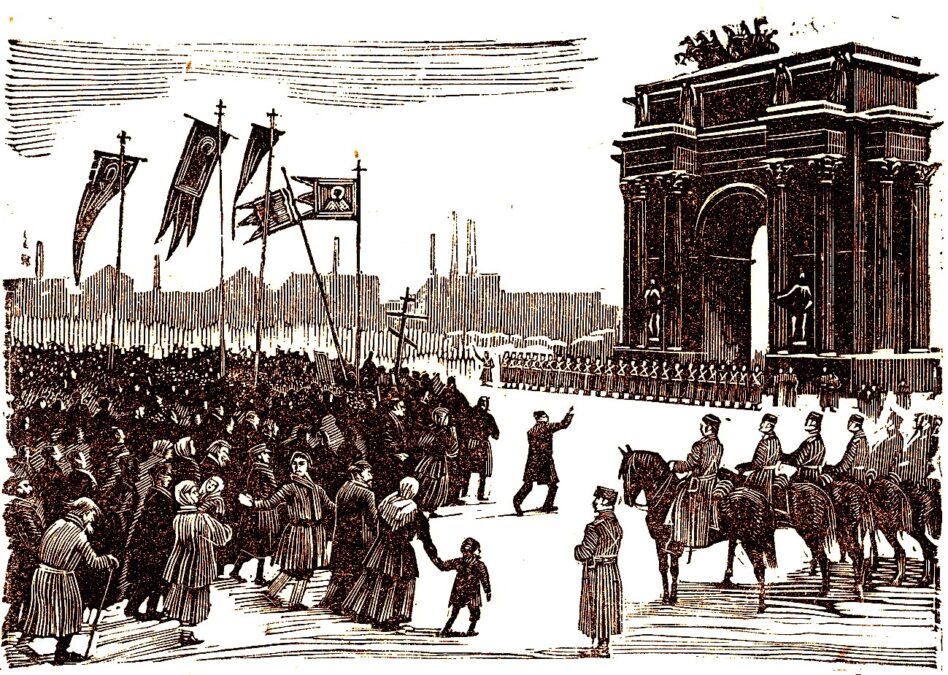
In 1905, in St Petersburg, Russia, January 22nd became known as Bloody Sunday.
In the early 1900s, the Russian working class suffered. Their wages dropped while prices increased. Toward the end of 1904, the priest Father Gapon tried to intercede for a couple of men that had lost their job. He asked for a few requests to help better all the workers’ lives. Denied, Father Gapon encouraged the workers to go on strike. That strike spread to other jobs.
After most jobs entered the strikes, Father Gapon drafted a petition to the Tsar to help the workers in Russia. After receiving thousands of signatures, Father Gapon led a protest march to the Winter Palace. The marchers consisted of more than 150,000 men, women, children, and the elderly, led by Father Gapon.
The marchers did not shout or cause trouble, they merely wished to present the petition to the Tsar. Instead. troops fired on protesters while the cavalry rode into the crowd cutting down people. At the end over 100 people died and prompted the name Bloody Sunday. Also, the people lost all hope, love, and respect for the Tsar, starting revolutions to remove the royalty.
Leave a Reply